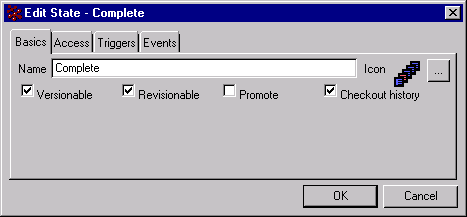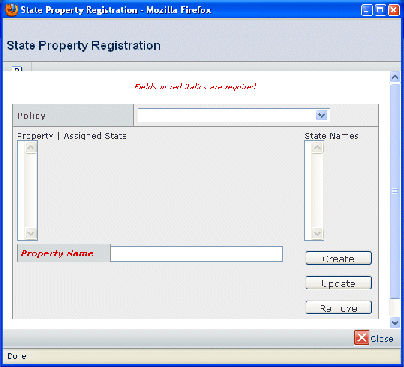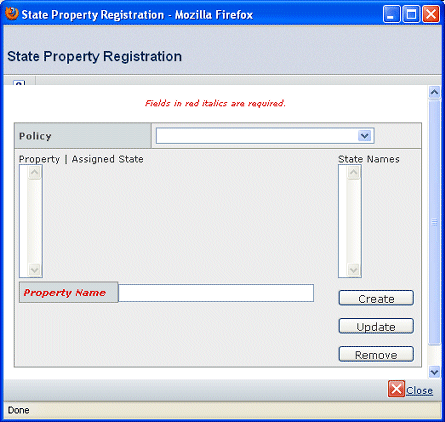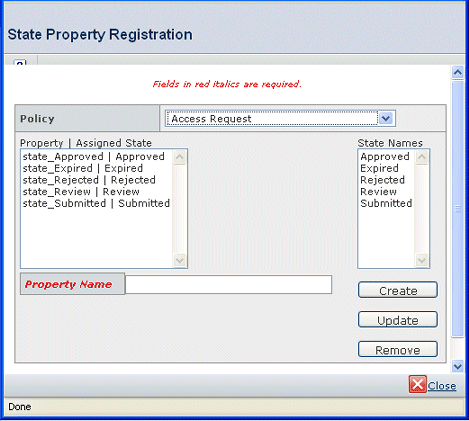Change a State Name in a Policy
Change the name by editing the state as you normally would in Business Modeler or MQL.
For example, in Business Modeler, edit the policy. On the State tab
of the Edit Policy dialog box, double-click the state. On the Basics
tab of the Edit State dialog box, change the state name.

In the ENOVIA product, click .
In the Change State Property dialog box, choose the policy that contains
the state you want to rename using the Policy
drop-down list.

The Property column lists the symbolic name and Assigned State properties
for the policy. The State Names column shows the state names currently
in the policy lifecycle.

In the Property/Assigned State list, choose the
state Property whose Assigned State you want to rename.
In the State Names list, choose the state that
you renamed.
Click Update.
The Assigned State changes to the selected State Name.

Add a State to a Policy
Add the state to the policy as you normally would in Business Modeler
or MQL.
From the global toolbar, click .
In the State Property Registration dialog box,
choose the policy that contains the state you want to add using the Policy
drop-down list.
The Property Column lists the symbolic name state properties added to
the policy, including the state to which the property points (the Assigned
State). The State Name column shows the state names currently in the
policy lifecycle. There should be one more state name than property because
there is no property for the state you added in Step 1.

In the Property Name box, enter the symbolic
name for the new state using the format "state_[state name with no spaces]".
For example, if you added a state called "Temp Archive", the symbolic
name property would be "state_TempArchive".
In the State Name list, choose the state that
you added.
Click Create.

Delete a State from a Policy
Delete the state from the policy as you normally would in Business Modeler
or MQL.
From the global toolbar, click .
In the State Property Registration dialog box,
choose the policy that contains the state you want to delete using the
Policy drop-down list.
The Property column lists the symbolic name state properties added to
the policy, including the state to which the property points (the Assigned
State). The State Name column shows the state names currently in the
policy lifecycle. There should be one more property than state name because
you deleted a state in Step 1.
Choose the property for the state that you deleted from the Property/Assigned
State list.
Click Remove.
|